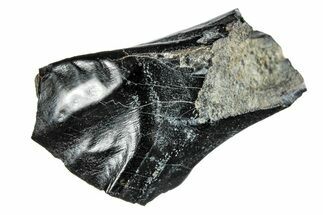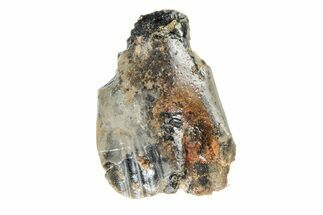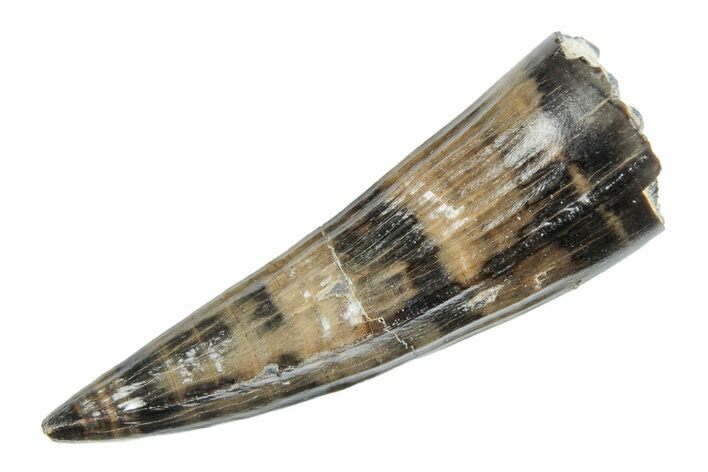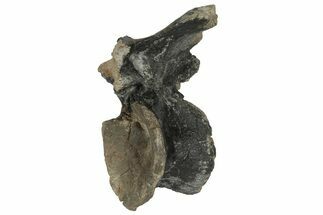This Specimen has been sold.
Rare .72" Spinosaurid Dinosaur (Baryonyx?) Tooth Fossil - England
This is a phenomenally rare .72" long tooth from a spinosaurid dinosaur (Baryonyx walkeri?). Baryonyx is a spinosaurid dinosaur that appeared in the fossil record earlier than its much larger relative, Spinosaurus aegypticus. Additionally, Baryonyx did not have a sail on its back, though it is posited that it shared a similar posture to Spinosaurus.
These teeth are quite rare, especially those in good condition. British dinosaur material in general is on the rarer side of the market, so it shouldn't be passed up when it comes along.
Comes with a riker display case.
These teeth are quite rare, especially those in good condition. British dinosaur material in general is on the rarer side of the market, so it shouldn't be passed up when it comes along.
Comes with a riker display case.
Baryonyx was a genus of theropod and early spinosaur that lived during the Early Cretaceous, about 130 to 125 million years ago. It likely reached lengths of 30 feet (about 9 meters) and weighed up to 3000 pounds (1300 kilograms). Like its later cousin Spinosaurus, Baryonyx hunted for fish and other aquatic animals by scooping them into its mouth, which was lined with an impressive 96 teeth. Its skull looks almost crocodilian: it is long and narrow, and contains a small crest. However, it had an unusually stiff neck for a theropod, and would not have been able to hold the characteristic S-curve seen on other theropod necks.
The first find of this impressive animal was discovered in 1983 by a plumber near the village of Ockley in southern England while he was fossil hunting in his space time. He found a strange lump protruding from the Wealden Clay, and from that lump he uncovered a massive 10-inch Baryonyx claw! This "heavy claw" was later studied and is now believed to have served a dual purpose of defense and assistance with hunting by hooking fish out of the water into its massive jaws.
Since its discovery in England, Baryonyx fossils have also been found in Spain and Niger.
The first find of this impressive animal was discovered in 1983 by a plumber near the village of Ockley in southern England while he was fossil hunting in his space time. He found a strange lump protruding from the Wealden Clay, and from that lump he uncovered a massive 10-inch Baryonyx claw! This "heavy claw" was later studied and is now believed to have served a dual purpose of defense and assistance with hunting by hooking fish out of the water into its massive jaws.
Since its discovery in England, Baryonyx fossils have also been found in Spain and Niger.
SPECIES
Baryonyx walkeri?
LOCATION
Brook Bay, Isle of Wight, England
FORMATION
Wessex Formation - Wealden Group
SIZE
.72" long
CATEGORY
SUB CATEGORY
ITEM
#279410
We guarantee the authenticity of all of our specimens.
 Reviews
Reviews












